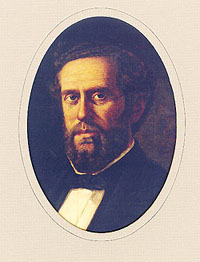John Ireland (politician)
| John Ireland | |
|---|---|
 |
|
| 18th Governor of Texas | |
|
In office January 16, 1883 – January 18, 1887 |
|
| Lieutenant |
Francis M. Martin Barnett Gibbs |
| Preceded by | Oran M. Roberts |
| Succeeded by | Lawrence Sullivan Ross |
| Mayor of Seguin, Texas | |
|
In office 1858–1858 |
|
| Member of the Texas House of Representatives | |
|
In office 1872 |
|
| Personal details | |
| Born | January 1, 1827 |
| Died | March 15, 1896 (aged 69) |
John Ireland (January 1, 1827 – March 15, 1896) was the 18th Governor of Texas from 1883 to 1887. During Ireland's term, the University of Texas was established, and construction on the Texas State Capitol began. Ireland is credited with the selection of local pink granite as the construction material.
Ireland was born January 1, 1827, in Hart County, Kentucky, to Irish immigrants Patrick Ireland and the former Rachel Newton. Although he had little formal education, when he was 18 he was appointed deputy sheriff of the county. At 24 years of age he decided to study law, and was admitted to the bar.
In 1852, Ireland moved to Texas, where he settled in Seguin and practiced law. Two years later, he married Mathilda Wicks Faircloth. She died in 1856, and the following year Ireland married Anna Maria Penn. They had three children together. Ireland was elected the mayor of Seguin in 1858.
A firm believer in slavery, Ireland campaigned for greater efforts to reclaim slaves who had run away to freedom in Mexico. He was an ardent secessionist and served as a delegate of Seguin to the 1861 Secession Convention. He enlisted in the Confederate States Army as a private and eventually worked his way through the ranks to that of lieutenant colonel. Throughout the Civil War, Ireland served within the Texas borders, patrolling along the Rio Grande border and along the Gulf Coast, where he was stationed at the war's end in 1865.
Following the war, Ireland participated in the Reconstruction Convention of 1866 and was soon elected judge of the Seguin District. He was removed from his position the following year when Radical Republicans seized power.
Ireland reentered politics in 1872, when he was elected to the Texas House of Representatives and chaired the executive committee of the Democratic party. During his time as a state legislator, Ireland backed the bill creating the University of Texas at Austin, was a proponent of low taxes, and favored regulating the railroads. In 1875, he served as an associate justice on the Texas Supreme Court. Later that year, he was a delegate to the Constitutional Convention. The new state constitution reduced the number of associate justices on the supreme court, and in 1876 Ireland lost his position.
...
Wikipedia
